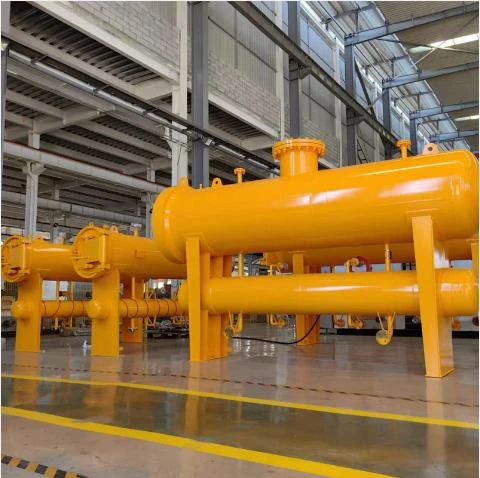
Dec . 25, 2024 20:02
Back to list
Pressure Relief Equipment for Enhanced Safety and Performance Management
Understanding Pressure Relief Equipment A Critical Component in Safety Management
In various industrial settings, managing pressure is crucial for ensuring operational safety and efficiency. One of the key aspects of this management is the use of pressure relief equipment. This equipment is designed to protect systems from excessive pressure, which can lead to catastrophic failures, equipment damage, and even hazardous situations for personnel. In this article, we will explore the importance, types, and applications of pressure relief equipment.
The Importance of Pressure Relief Equipment
Pressure relief equipment plays a vital role in safeguarding both the physical integrity of equipment and the safety of workers. In industries such as oil and gas, chemical manufacturing, and power generation, the potential for pressure build-up is significant. If pressure exceeds the design limits of a vessel or piping system, it can lead to ruptures, explosions, or other dangerous incidents. Therefore, these systems must have reliable pressure relief mechanisms to mitigate risks.
Moreover, regulatory bodies mandate specific safety standards relating to pressure management. These regulations require industries to implement pressure relief systems that comply with established codes, ensuring that they monitor, maintain, and operate safely within prescribed limits. Failing to comply with these regulations can result in severe penalties, financial losses, and damage to a company’s reputation.
Types of Pressure Relief Equipment
1. Relief Valves One of the most common types of pressure relief equipment, relief valves are designed to automatically open at a preset pressure, allowing fluid to escape when necessary. They are critical in preventing overpressure conditions in pipes, tanks, and vessels.
2. Safety Valves Similar to relief valves, safety valves are used to protect against excessive pressure. However, they are engineered to respond to sudden pressure spikes and close tightly once normal operating conditions resume.
معدات تخفيف الضغط

3. Bursting Discs These are pressure relief devices that rupture at a predetermined pressure level. Unlike valves, bursting discs are non-reclosing, meaning they must be replaced after activation. They are primarily used in applications where rapid pressure relief is critical.
4. Pressure Relief Blowers In systems where gases can create excess pressure, specialized blowers vent excess gas in a controlled manner, thus maintaining safe operating conditions.
5. Vacuum Relief Valves These devices prevent vacuum conditions that can lead to collapse in storage tanks and piping systems. They allow air to enter a system when the internal pressure drops below a certain level.
Applications of Pressure Relief Equipment
Pressure relief equipment finds applications across various industries. In oil refineries, for example, it helps manage the high pressures associated with crude oil processing. Chemical plants utilize pressure relief systems to manage volatile organic compounds and ensure safe operation during chemical reactions.
Power generation facilities, particularly those utilizing steam turbines, rely on pressure relief equipment to maintain optimal pressures in boilers and cooling systems. The pharmaceutical industry also employs these systems to protect sensitive processes that must operate within strictly controlled pressure parameters.
Conclusion
Pressure relief equipment is an indispensable part of industrial safety management. By preventing overpressure conditions, this equipment protects not only valuable assets but also the lives of workers and the environment. With varying types of relief devices available, industries can select the appropriate systems tailored to their unique operational needs and regulatory requirements. As technology advances, continuous improvements in the design and functionality of pressure relief equipment will further enhance safety and operational efficiency in critical sectors. Understanding and implementing these systems is essential for any industry that handles pressurized processes, underscoring the importance of diligent maintenance and compliance with safety regulations.
Latest news
-
Safety Valve Spring-Loaded Design Overpressure ProtectionNewsJul.25,2025
-
Precision Voltage Regulator AC5 Accuracy Grade PerformanceNewsJul.25,2025
-
Natural Gas Pressure Regulating Skid Industrial Pipeline ApplicationsNewsJul.25,2025
-
Natural Gas Filter Stainless Steel Mesh Element DesignNewsJul.25,2025
-
Gas Pressure Regulator Valve Direct-Acting Spring-Loaded DesignNewsJul.25,2025
-
Decompression Equipment Multi-Stage Heat Exchange System DesignNewsJul.25,2025

